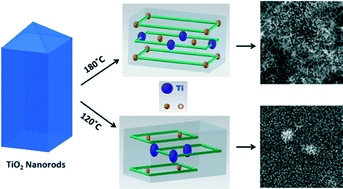Controlled (110) and (101) crystallographic plane growth of single crystalline rutile TiO2 nanorods by facile low cost chemical methods
Abstract
A new approach has been employed to grow large size and high number density rutile TiO2 nanorods (NRs) by low cost chemical methods. Nuclei layers of low (~30 nm) and high (~150 nm) thickness have been optimized on glass substrates for growing NRs using spin coating and chemical spray pyrolysis methods respectively. The scanning electron and atomic force microscopic images clearly show that randomly aligned, large size, exotic NRs have grown on low thickness seed layers at a high temperature (180 °C), and that interconnected, NRs with good number density have grown on high thickness seed layers at a low temperature (120 °C) via hydrothermal synthesis. The structural studies clearly reveal that the as-grown NRs have tetragonal rutile structures with different anisotropic crystallographic plane growth along the c-axis. The preferentially oriented (110) Bragg reflection in the large size NRs and (101) Bragg reflection in the number dense NRs illustrate that the Ti atoms are positioned in the middle of the atomic layer and stimulate randomly standing NRs along the direction of stacking. The growth orientation and single crystalline nature of the NRs are confirmed by high resolution transmission electron microscopy and μ-Raman scattering. The absorbance value and the shift in the UV-vis energy region of the TiO2 NRs are strongly dependent on the number density and/or size of the NRs. The crystal defects of the prepared rutile TiO2 NRs are analyzed using photoluminescence spectra. Our results show that the thickness of the seed layer and the growth temperature play a pivotal role in determining the two anisotropic crystallographic plane growths of rutile TiO2 NRs.


 Please wait while we load your content...
Please wait while we load your content...